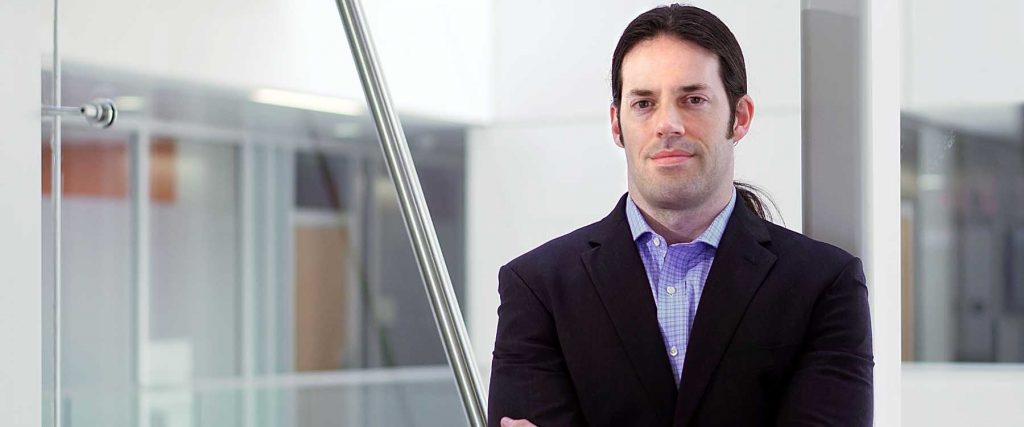Going Green is very excited to have Ryan Kennedy, the Co-Founder and CEO of Atom Power, on the Going Green Podcast to talk about the future of clean power. Prior to the show, we wanted to sit down and get to know Ryan a little bit better.
How did you get involved in the sustainable industry?
I started my career as a commercial electrician after high school and, during my first week in the field, I witnessed an electrical arc flash explosion that showed me just how dangerous and deadly electricity could be. These explosions are a common occurrence in the world of commercial power, but experiencing it firsthand opened my eyes to the problems with our electrical infrastructure and inspired me to build something better.
From there, I went to college to become an engineer and worked on construction and design projects for Commercial & Industrial buildings. I continued to experience the shortcomings of our electrical infrastructure, including not easily being able to switch between power sources, and realized that most of these pain points tied back to the mechanical nature of circuit breakers.
Circuit breakers control all power flowing through buildings today, yet they’re analog and mechanical, and have failed to change since their inception in Edison’s lab 140 years ago. We’re long overdue for smarter, more efficient power management, so I set out to make the circuit breaker digital and Atom Power was born.
The energy industry has long recognized the need for a digital circuit breaker, but actually creating one was no small feat. Major players have tried with mixed results over the years because of technology limitations. Until very recently, semiconductors were not advanced enough to manage significant energy volumes in an affordable, compact way. My team and I had to figure out a way to leverage advanced material sciences that made semiconductors smaller and more powerful.
In May 2019, we introduced the world’s first digital circuit breaker to market, which completely changed the possibilities for every aspect of power distribution today and provided the foundational infrastructure needed as we work toward a more sustainable future. Our circuit breaker, the Atom Switch, uses semiconductors and software to intelligently control the flow of power digitally, which enables the widespread adoption of renewables and other clean energy technologies that sustainably power our world. For the first time, renewable power sources can be connected, managed and used just like data on the Internet.

What trends are you seeing in your industry?
In recent years, I’ve seen an emphasis on cleaner power and renewable sources across industries, but the problem is we still haven’t quite figured out how to tie various renewable energy sources to each other or into the grid. This is one of the main challenges that I wanted to address with our product. By leveraging semiconductors and software, our device can switch between power sources (utility, solar, wind, backup generator, etc.) instantly and based on need, which makes it easier than ever for users to integrate renewable sources alongside their traditional utilities.
I’m also seeing a huge trend toward electric vehicle adoption and a desire to find solutions to actually power them all. EV manufacturing and adoption is certainly increasing, but access to charging infrastructure is still lacking. EV chargers require a lot of power, and buildings currently require expensive infrastructure changes in order to handle the load. With a digital circuit breaker, you can intelligently distribute power load to and from EV chargers as needed, which helps alleviate this issue. Looking ahead, we plan to launch a new advanced e-mobility offering that will dramatically change how EV charging is deployed and save even more energy and costs.
COVID-19 has also highlighted the need for remote power management and smarter building design. With more people working from home, we’ve seen a dramatic shift in our power needs. Office buildings require significantly less power when no one is working in them, but building operators have no way to adjust their power settings remotely. Remote power management would help maximize energy efficiency and reduce wasted power.
What is one “Action Item” the viewers can take away from this conversation?
Commercial and Industrial building managers, operators and stakeholders should take a critical look at their electrical infrastructure. You’ll find that it’s a cobbled-together, disaggregated system that typically has very limited visibility and at best a rudimentary level of control. Imagine a world where a single device (the digital circuit breaker) can do just about everything for you, offering unlimited visibility and control.
If we want to progress, it’s important to acknowledge how our electrical infrastructure is holding us back. Right now, and in the past 140 years, the electrical infrastructure has been analog. It’s the last of the systems to still be this way. It’s time to go digital and to unlock the unlimited capabilities we could have in these systems. With the giant on the horizon, which is the EEV infrastructure, and to effectively use renewables, our infrastructure must go digital. This all could and should happen at the circuit breaker. It’s the one common device in every electrical system.
To learn more about Atom Power and the future of clean power, visit their website, and be sure to follow the Going Green Podcast for Ryan’s episode.
Dylan Welch is the CEO and Host of Going Green, a podcast, website, and social media brand that highlights renewable energy, cleantech, and sustainable news.